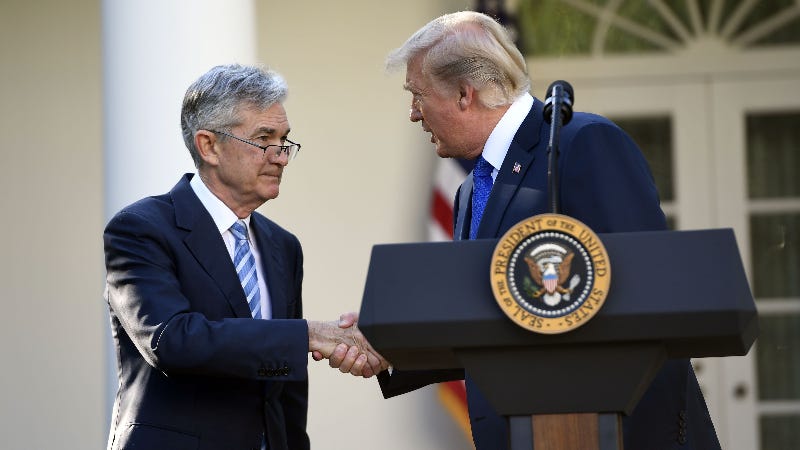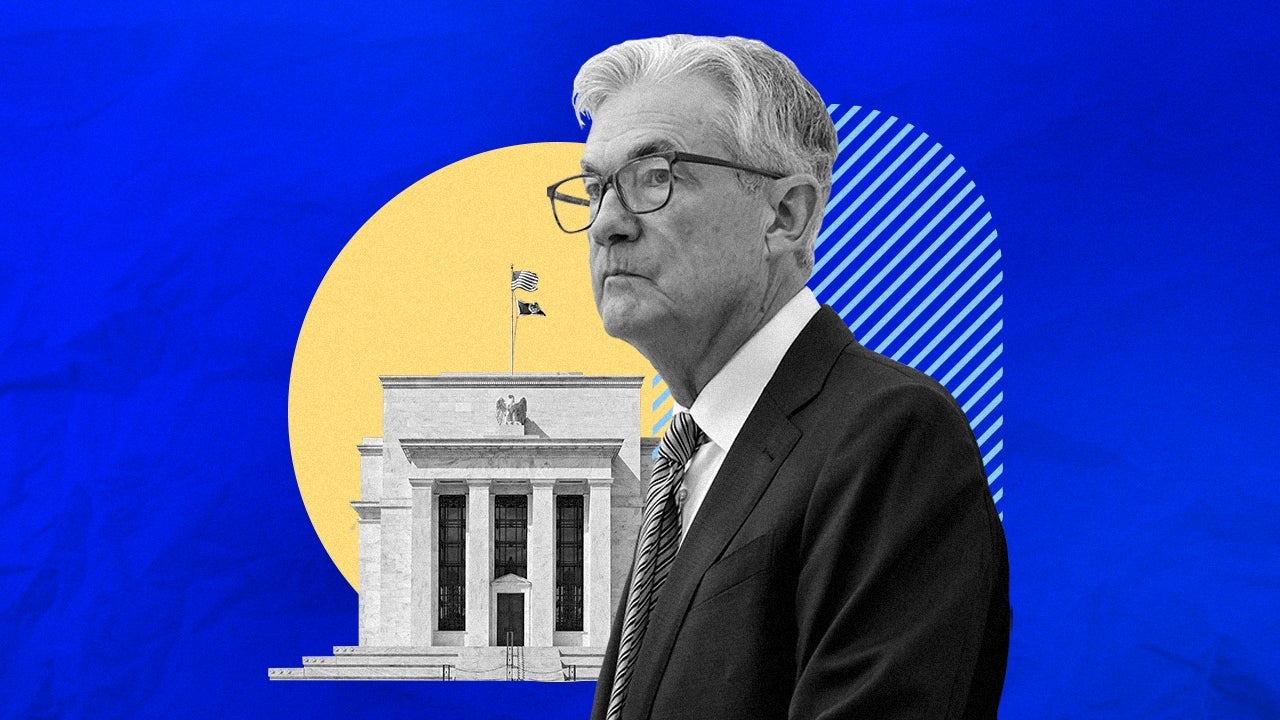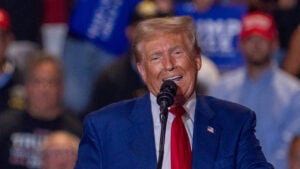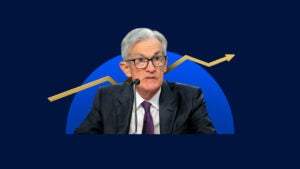Was Trump right about the Fed and the need for lower interest rates all along?

Few Federal Reserve watchers a year or so ago believed the U.S. central bank needed to cut interest rates and grow its balance sheet again.
Not President Donald Trump.
The chief executive spent nearly a year insisting that the Fed was getting it wrong, first urging officials to cut interest rates when they were still on the sidelines, and then to start growing its balance sheet while the Fed was still underway with shrinking it.
But that’s exactly how the story ended in 2019 — one of the most tumultuous years for monetary policy in recent memory — and it might have justified Trump’s position all along. The U.S. central bank cut interest rates at three straight meetings, as global and domestic headwinds gathered amid slowing global growth and lukewarm inflation. Then, last fall, a cash crunch occurred in money markets, prompting the Fed to start purchasing assets again after realizing they might’ve taken the process too far.
Come February 2020, and the Fed is still in the middle of untangling those policies. But experts caution that the president, who has made a habit of jawboning Fed officials, wasn’t wholly correct — even if his calls ended up being right.
“He might’ve been right by accident,” says Tim Duy, an economics professor at the University of Oregon who authors a blog titled “Fed Watch.” “The Fed did have to back off of both policies, they did have to reverse course on interest rates and they did have to reverse on the balance sheet. Trump was not wrong on both of those issues, but how he got there might’ve been wrong.”
Trump’s comments were more political than economical, experts say
Part of that reasoning is Trump’s statements were politically pointed, rather than being specifically focused on what’s best for the U.S. economy.
There’s nothing new about presidents preferring low interest rates. Cheap borrowing costs boost economic growth. Businesses have an incentive to spend and invest, households are more likely to make new purchases and stocks prices propel forward.
All of this matters to presidents, especially ones who are vying for reelection. They enter the White House with big promises, many of which require a booming economy to fulfill. When central bankers start tapping on the brakes, disagreements happen.
“Calling for low interest rates would make him popular, and he understood low interest rate policies by the Fed would provide more stimulus,” says George Selgin, senior fellow and director of the Center for Monetary and Financial Alternatives at the Cato Institute. “This is a very old hat. It’s almost always the case that presidents would rather interest rates be kept lower than the Fed would want them.”
Trump also knows from direct experience that low interest rates can impact business, having spent most of his adult life in real estate, Duy says.
But by no means is Trump the first president to specifically attempt to steer policy. President Lyndon B. Johnson reportedly pushed then-Fed Chairman William McChesney Martin against a wall, while President Richard Nixon had frequent meetings with Arthur Burns in the Oval Office.
Social media, however, has made Trump’s barrages more public. On Twitter, Trump has likened Fed Chairman Jerome Powell to an enemy, deemed the Fed “the biggest threat” to the U.S. economy and called officials “boneheads.”
Many experts say these comments give him a scapegoat in case the U.S. economy were to turn south.
“It’s a way for him to put pressure on the Fed,” says Robert Brusca, chief economist at Fact and Opinion Economics who formerly worked for the New York Fed. “It’s a way for him to try to communicate that he had this promise of 4 percent growth, and if the Fed had cooperated, then we would be there.”
Trump tweeted about Fed policy more than 100 times
The chief executive has tweeted 102 times about Fed policy since appointing Powell as chief U.S. central banker in November 2017, according to a Bankrate analysis of Trump’s tweets.
Trump also appeared to turn his comments up a notch after the Fed first cut rates in 2019, with the majority of his social media posts (specifically, 65 percent) coming on or after July 31.
Even so, 31 tweets (or 30 percent) occurred while the U.S. central bank was in “media blackout,” the near-two week period leading up to each Federal Open Market Committee (FOMC) meeting when officials refrain from publicly commenting on policy to preserve their independence. Trump has also tweeted during six of the 16 total Fed meetings under Powell’s tenure, and he’s commented on all three policy decisions when the Fed has cut rates.
But Trump hasn’t always preferred low interest rates. During the years of Barack Obama’s presidency, Trump called the Fed “reckless” for holding down interest rates and expanding the balance sheet through multiple stimulus programs known as “quantitative easing.” Trump tweeted about the Fed 20 times while Obama was president, 18 of which advocated against those stimulus programs, Bankrate’s analysis found.
The Fed's reckless policies of low interest and flooding the market with dollars needs to be stopped or we will face record inflation.
— Donald J. Trump (@realDonaldTrump) September 29, 2011
“He was under the category of standard conservative politicians who were very much upset that the Fed was holding rates low during the Obama administration and then became enamored with low rates after [he] took office,” Duy says.
Trump inherited a stronger economy than Obama
But the U.S. economy under the Trump administration is in much better shape than when Obama first took office. In 2009, Americans were in the midst of the worst economic crisis since the Great Depression. Joblessness surged to as high as 10 percent, and gross domestic product contracted by as much as 8.4 percent.
The Fed slashed interest rates to near-zero in an attempt to revive economic growth, and they’d keep them in that position to continue stimulating the economy. Then, in December 2015, the Fed hiked rates for the first time since 2006, as nationwide unemployment fell to 5 percent. It would go on to increase rates one more time under the Obama administration.
By the time Trump became president, the national unemployment rate had fallen to 4.7 percent, and inflation was growing steadily, seemingly zeroing in on the 2 percent target that U.S. central bankers had defined in 2012. The Fed would go on to hike seven more times during the current expansion, the longest on record.
“The president doesn’t have any acknowledgment of these factors,” Brusca says. “He just seems to act like the interest rate is a politically arbitrary variable where the Fed can put it wherever he wants.”
But the Fed walked back three of those hikes in 2019. Experts point out that those reductions were largely meant to soothe an ailing economy harmed by trade policy in Washington, including the tit-for-tat tariff war between the U.S. and China, which injured business investment and confidence. The conflict between Washington and Beijing shaved an estimated 0.3 percent off U.S. growth and nearly 300,000 jobs, according to an analysis from Moody’s Analytics.
Fed’s Dec. 2018 rate hike was a ‘miscalculation’
But the Fed’s policy reversal also highlighted a paradigm shift: Officials’ perceptions about the relationship between unemployment and inflation had changed — thus did their perception about interest rates. It vindicated some of Trump’s positions.
The Fed spent much of 2018 operating under the assumption that Trump’s tax cuts and a continually plunging unemployment rate would soon kick the economy into high gear, creating inflation. And until about five years ago, policymakers assumed that unemployment couldn’t get much lower than 5 percent, suggesting the U.S. economy was on the brink of overheating.
The Fed hiked four times in 2018 under this assumption — even though none of it ended up coming to fruition. Joblessness continued its free fall, plunging to as low as 3.5 percent, while inflation remained tepid.
Leading up to the Fed’s three cuts last year, Powell admitted in July during his semiannual testimony to Congress that officials didn’t get their estimates right, adding that joblessness can go much lower than officials initially thought without stoking inflation. That revelation also meant that interest rates were restricting growth more than officials thought. That’s something Trump had been claiming all along, with the claims appearing as early as April, before the possibility of rate cuts were even on the Fed’s radar.
China is adding great stimulus to its economy while at the same time keeping interest rates low. Our Federal Reserve has incessantly lifted interest rates, even though inflation is very low, and instituted a very big dose of quantitative tightening. We have the potential to go…
— Donald J. Trump (@realDonaldTrump) April 30, 2019
“Donald Trump was right,” Duy says. “The Fed did raise interest rates too much in 2018, and certainly, the last rate hike in 2018 and the signaling for more hikes in 2019 was a pretty clear error. Donald Trump did call the Fed out on this, and the Fed proved that rates were too high because they cut interest rates.”
But it’s hard to know for sure whether tighter-than-expected interest rates were what held back growth and not a changing economic environment, Selgin says. Amid a backdrop of slowing growth and ongoing trade wars, officials realized that rates needed to be in the position of stimulating growth, not restraining it.
That corresponds with what Powell has said on the topic. With the December rate hike having been in the rear-view mirror for more than a year, Powell told lawmakers in February that “hindsight is 20/20. You have to judge those decisions on what we knew at the time.”
Meanwhile, Powell and Co. aren’t the only central bankers right now confronting the challenges of low inflation, low unemployment and lower interest rates. It’s a conundrum that many other monetary policymakers are finding themselves head-to-head with, including the European Central Bank.
“It doesn’t mean Donald Trump is a better monetary economist — and better policymaker than people on the board — for arguing the Fed should lower interest rates, and lo and behold, it eventually had to. That’s just a coincidence,” Selgin says. “Long-run forces are lowering natural interest rates and causing monetary policymakers everywhere, not just in the U.S., to recalibrate their notion of what constitutes as a normal, sustainable interest rate policy.”
Trump’s balance sheet claims glossed over technical reasons
Largely occurring in the background of that normalization process has been the U.S. central bank’s balance sheet plans. Officials were in the midst of shrinking it back to normal levels, a process frequently called “quantitative tightening,” after growing it substantially during the Great Recession to bring the economy back to life.
Officials admitted that the balance sheet would end up much larger than before the crisis, but exactly how much bigger, they didn’t know.
The topic came under fire with Trump, who frequently criticized the process. He argued that the Fed was holding back U.S. growth, and he often insisted the Fed should kick start “Q.E.” again.
If the Fed had done its job properly, which it has not, the Stock Market would have been up 5000 to 10,000 additional points, and GDP would have been well over 4% instead of 3%…with almost no inflation. Quantitative tightening was a killer, should have done the exact opposite!
— Donald J. Trump (@realDonaldTrump) April 14, 2019
Those who have been following the more complicated aspects of the Fed’s work as of late might realize that there was some truth to Trump’s statement. But there are a few complicated, yet critical distinctions.
The Fed’s balance sheet drawdown didn’t exactly put a damper on U.S. economic growth as Trump argued, but the U.S. central bank might have taken it too far. Last September, funding dried up in a corner of the financial system known as the repurchase agreement, or repo, market. Experts say it’s directly related to how much the Fed has reduced the supply of bank reserves in the system.
As a result, the Fed in October started growing its balance sheet again. But it’s not the same as “Q.E.”
That reasoning is more from a technical standpoint. The “Q.E.” process requires that the Fed purchase longer-term securities, which stimulates growth and brings down longer-term interest rates. But the Fed today is purchasing short-term Treasury bills to increase bank reserves. In other words, it doesn’t provide a direct stimulus to the U.S. economy.
“It’s kind of splitting hairs, but reserve growth we’re seeing now is not necessarily what President Trump was calling for,” says Lindsey Piegza, chief economist at Stifel. “This is the line they’ve drawn as the distinction.”
Still, that hasn’t convinced some market participants. More than half (or 53 percent) of financial investors believe the Fed’s actions are a form of QE, according to a December survey from RBC Capital Markets.
Perception matters to a central bank. If the public believes the Fed’s actions are indeed “QE,” they’ll behave differently, which in some ways leads to the same outcome.
Experts: Economy didn’t take off on Trump’s ‘rocket ship’
Trump’s thumps have made the Fed’s job even harder.
Officials are purposely insulated from politics and report directly to Congress rather than the president, so they can make decisions for the good of the economy, not a political party. Affirming that independence will be crucial when the Fed explains its decision-making. Moving forward, this means the Fed will walk a challenging tightrope.
But another risk arises when the president makes his demands public: The Fed might be less willing to enact that policy, even if it’s what’s ultimately right.
“It certainly makes it harder for the Fed to look like they’re independent of the political process when they are in fact following in line with what the president has said he wanted,” Duy says. “The risk has always been that the Fed would drag its heels and not cut interest rates to prove its independence.”
Even so, there are other presidential demands that the Fed hasn’t fulfilled, such as negative interest rates. Still, much of Fed policy in 2020 is up in the air. Near-term recession fears have receded largely because of the Fed’s three cuts. But other economic uncertainties, such as low inflation and the coronavirus, make it seem more likely that the Fed will cut rather than hike.
Even though the Fed did ultimately fulfill part of Trump’s requests, experts say it hasn’t propelled the economy forward “like a rocket ship,” as the president suggested it would. Growth has averaged out to 2.6 percent over the past three years, with the strongest year coming in 2017 after Trump’s tax cuts. The Congressional Budget Office, however, estimates that growth will average out to 1.9 percent each year over the next decade.
“The Fed probably did damage the economy a little bit by tightening rates, but I don’t think it’s the difference between where we are and a rocket ship,” Brusca says. “It just goes to show that even Mr. Trump can be right for the wrong reasons.”






